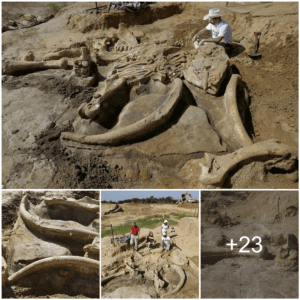Hello everyone, and welcome to our intriguing journey through the forbidden annals of history. In today’s video, we delve into the dark history of Valentine’s Day, from the questionable traditions of ancient Romans to the witch hunts of the Middle Ages. Join us as we explore the strangest events in forbidden history. Let’s get started.
The Dark History of Valentine’s Day
Valentine’s Day, according to some, originated from the Romans’ immoral and extravagant traditions during this festival. However, it wasn’t just about entertainment; men organized a matchmaking lottery during these celebrations, forcing couples matched through this lottery to spend time together, willingly or not. Fast forward to the 3rd century, a priest named Valentinus was executed on the exact day, and the Catholic Church later honored him as a martyr. Yet, in the 5th century, Pope Lubercalia ordered the ban of the festival, replacing it with a gloomier tradition named “Valentine’s Day,” as we know it today.

The Buried City of Selinunte
2500 years ago in Ancient Greece, a tragedy unfolded in Sicily, a tale often omitted from history lessons. Archaeologists recently uncovered the buried city of Selinunte, where locals were massacred, and survivors were enslaved by invaders in the 5th century BCE. The city, once thriving with a harbor, industrial zones, and residential neighborhoods, turned into a ghost town after the invasion. Thousands were killed, and those who survived were taken as slaves, leaving the city deserted and eventually buried under layers of sand over millennia.
Lizard People of Los Angeles
Legend has it that there are lizard people living underground in California, particularly in Los Angeles County. The folklore suggests that these lizard people built three giant underground cities to protect themselves from catastrophic fires that engulfed the entire state. While the story is intriguing, no underground city has ever been found. Still, the myth persists, with some variations claiming that these lizard people were not reptilian but rather humans who worshipped lizards.
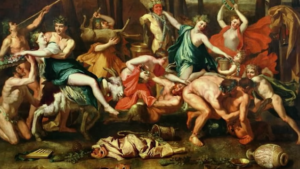
Thirsty for Blood – The Carthaginian Sacrifices
Archaeologists have recently discovered a horrifying practice in ancient Carthage, North Africa. Contrary to the long-standing denial by scholars, researchers from Oxford University confirmed that Carthaginian parents indeed sacrificed their own children as offerings to the gods. Historical records from Romans and Greeks had hinted at such practices, but scholars dismissed them as propaganda. However, evidence from Carthaginian cemeteries, including sacrificial rituals and inscriptions on the remains of infants, proved the gruesome reality of the sacrifices.
Imperial Steps of China’s Forbidden City
In the Ming Dynasty (1368–1644) of Imperial China, emperors maintained colossal harems, each with a hierarchy. The official wife or empress occupied the top position, followed by concubines with higher ranks and, at the bottom, the maids. To prevent any threat to the emperor’s consorts, a small army of eunuchs was employed, ensuring that men did not approach the women. Upon the emperor’s death, the concubines faced a tragic fate; those who had enjoyed a good life were gathered and sacrificed to ensure the emperor’s happiness in the afterlife, buried alive to accompany him.
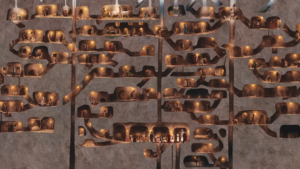
Devil Worship in the Middle Ages
During the Middle Ages, serious witch hunts were initiated by the Church Inquisition, targeting many women accused of worshipping the devil or being evil witches. While the brutality of these actions is widely known, a lesser-known aspect is the aftermath of the Roman and pagan ideologies’ decline. After the spread of Christianity across Europe, remnants of pagan beliefs persisted in various rural areas, coexisting with Christianity. To eradicate these beliefs, the Church invented the term “devil worship,” accusing individuals of practicing the old pagan religions, leading to a suppression that strengthened the Church’s influence for centuries.
The Necronomicon
The Necronomicon, infamous from Lovecraft’s cosmic horror tales and later popularized in the “Evil Dead” film, remains a fictional creation. However, in medieval Europe, some forbidden texts did exist. One such text is the “Grand Grimoire,” a black book dating back to at least 1421. While some argue it was created in the 19th century to deceive, others believe it contains ancient writings reaching back to King Solomon. Unlike the fictional Necronomicon, the Grand Grimoire provides instructions on summoning demons and making pacts with Lucifer.
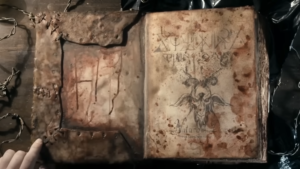
The Merovingian Mystery
Hello, everyone! I’m Shahane, ruling the Frank Kingdom during the 5th century Dark Ages. Despite being overshadowed by the Carolingian dynasty, our role in shaping post-Roman Europe was significant. However, we were eventually defeated by the Carolingians, and our legacy vanished. Some speculate that powerful authorities, including the Vatican, intentionally suppressed our existence because we claimed to be the legitimate rulers, direct descendants of Jesus. According to our belief, Jesus escaped crucifixion, fled to present-day France, and established a lineage that ruled for centuries. While there’s no evidence, many Frank kings claimed to carry the blood of Jesus, a historical mystery often overlooked.
Cleopatra’s Forgotten Son
While Cleopatra and Caesar are well-known historical figures, few are aware of their mysterious child. Cleopatra, the last pharaoh of Egypt, had a son with Julius Caesar. After Caesar’s assassination, Cleopatra, and her son faced challenges from Roman authorities. Cleopatra’s son, falsely claimed to be Caesar’s heir, was eventually discarded in favor of Octavian, leading to the end of Cleopatra’s dynasty. The intriguing part? Cleopatra’s son, born through Caesarion, had a legitimate claim to rule both Egypt and the Roman Empire, a story often overshadowed by the more prominent figures in history.
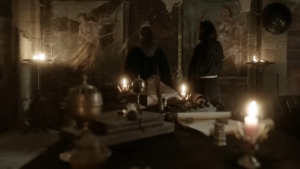
Giants of Sardinia
Hidden on the beautiful island of Sardinia lies a secret history involving giants that few are aware of. Discovered in 1974, the remnants of the Mont’e Prama giants were a collection of approximately 38 stone statues. Archaeologists spent nearly 40 years reconstructing these statues, and while they now reside in the National Archaeology Museum, the mystery surrounding their creators and purpose persists. Some claim these giants were built by a pre-Nuragic civilization around 900 BCE, making them one of the largest sculptures carved in the Mediterranean. The true meaning or inspiration behind these giant figures remains elusive, sparking debates among experts and leaving us with a puzzling piece of history.
As we conclude this journey through forbidden history, we invite you to share your thoughts and theories about these enigmatic events. What could the dev giants of Sardinia symbolize, or how plausible is the claim of the Merovingians being descendants of Jesus? Your insights may unlock further layers to these forbidden mysteries. Until next time, stay curious!


